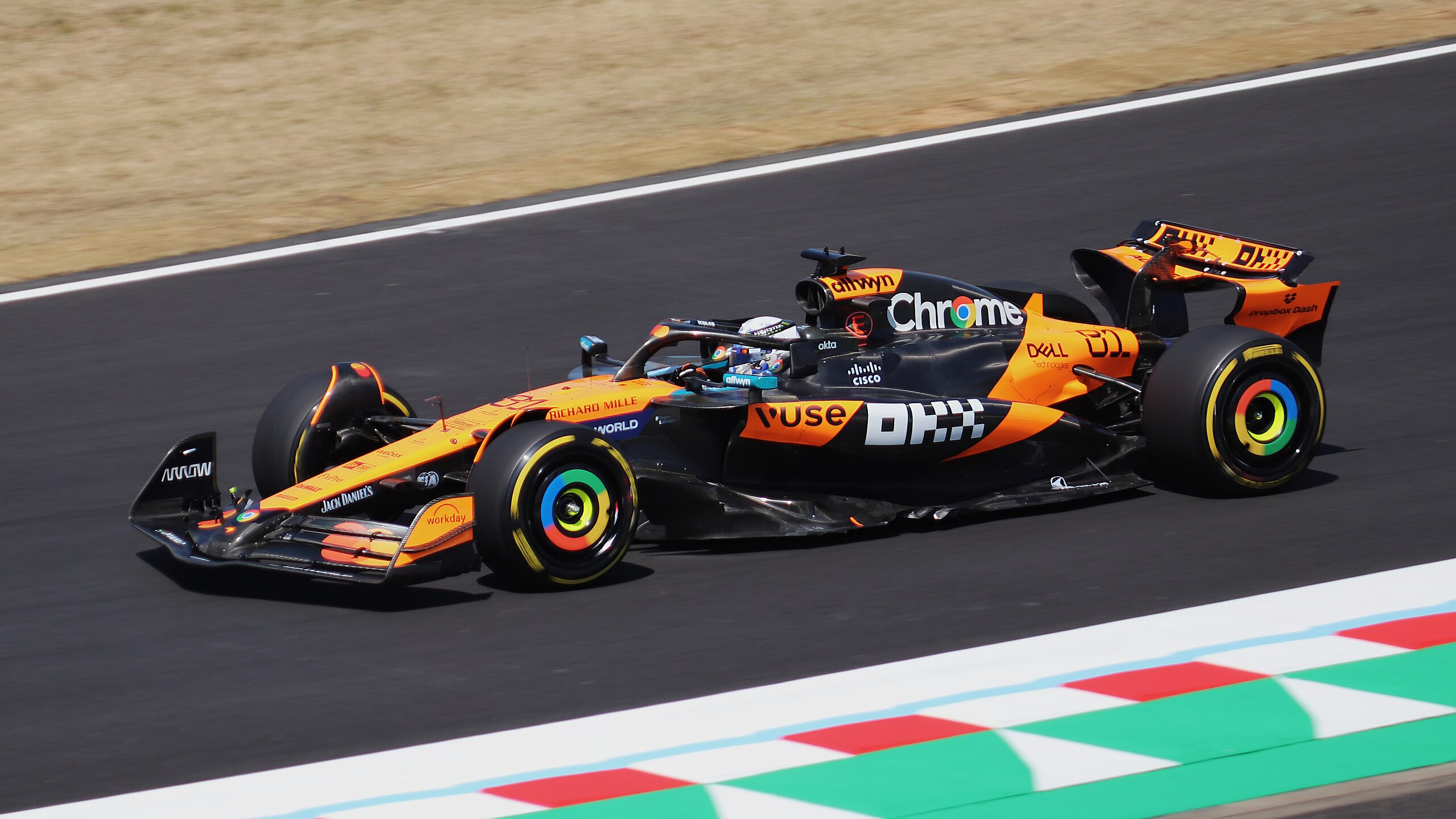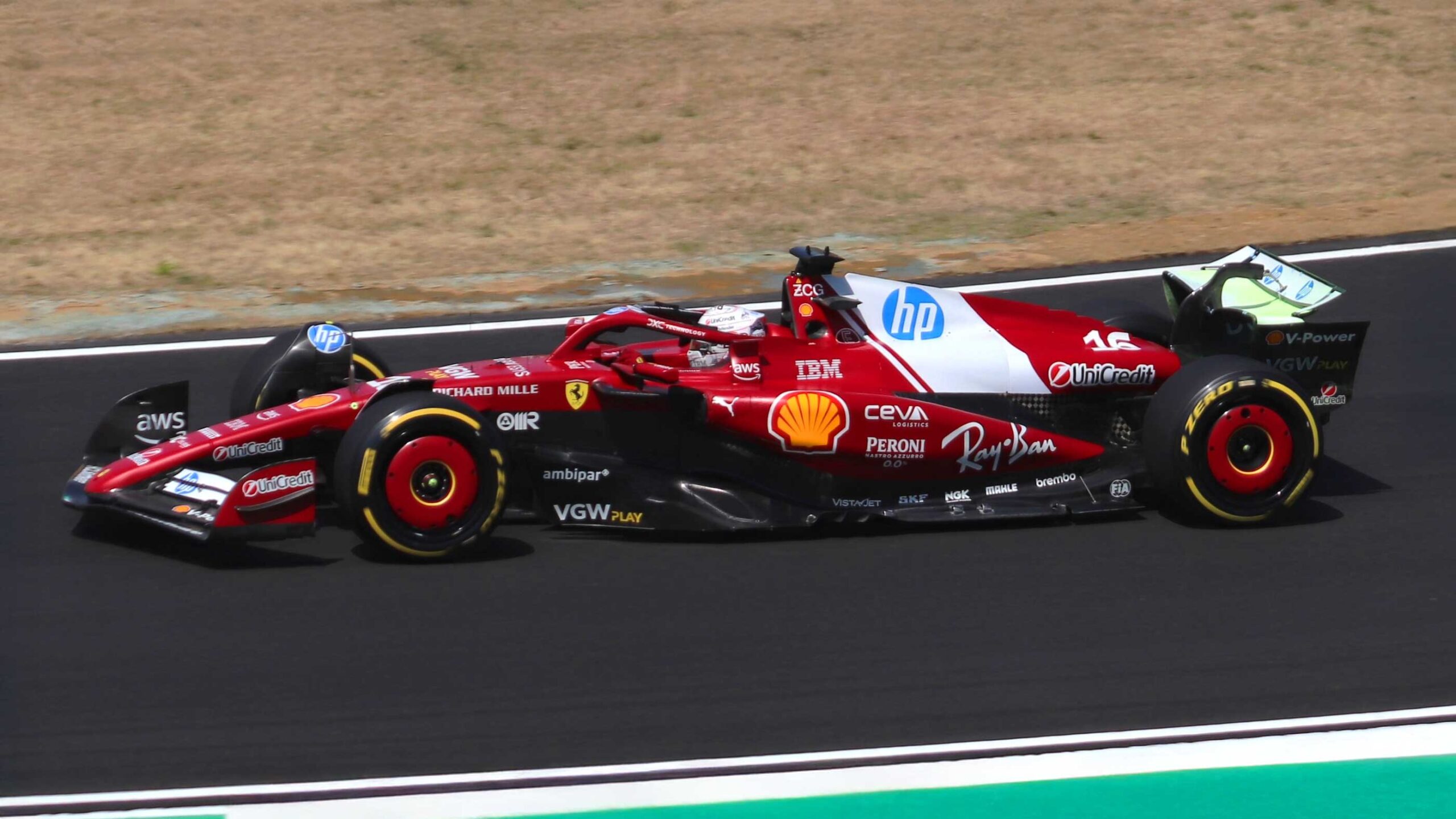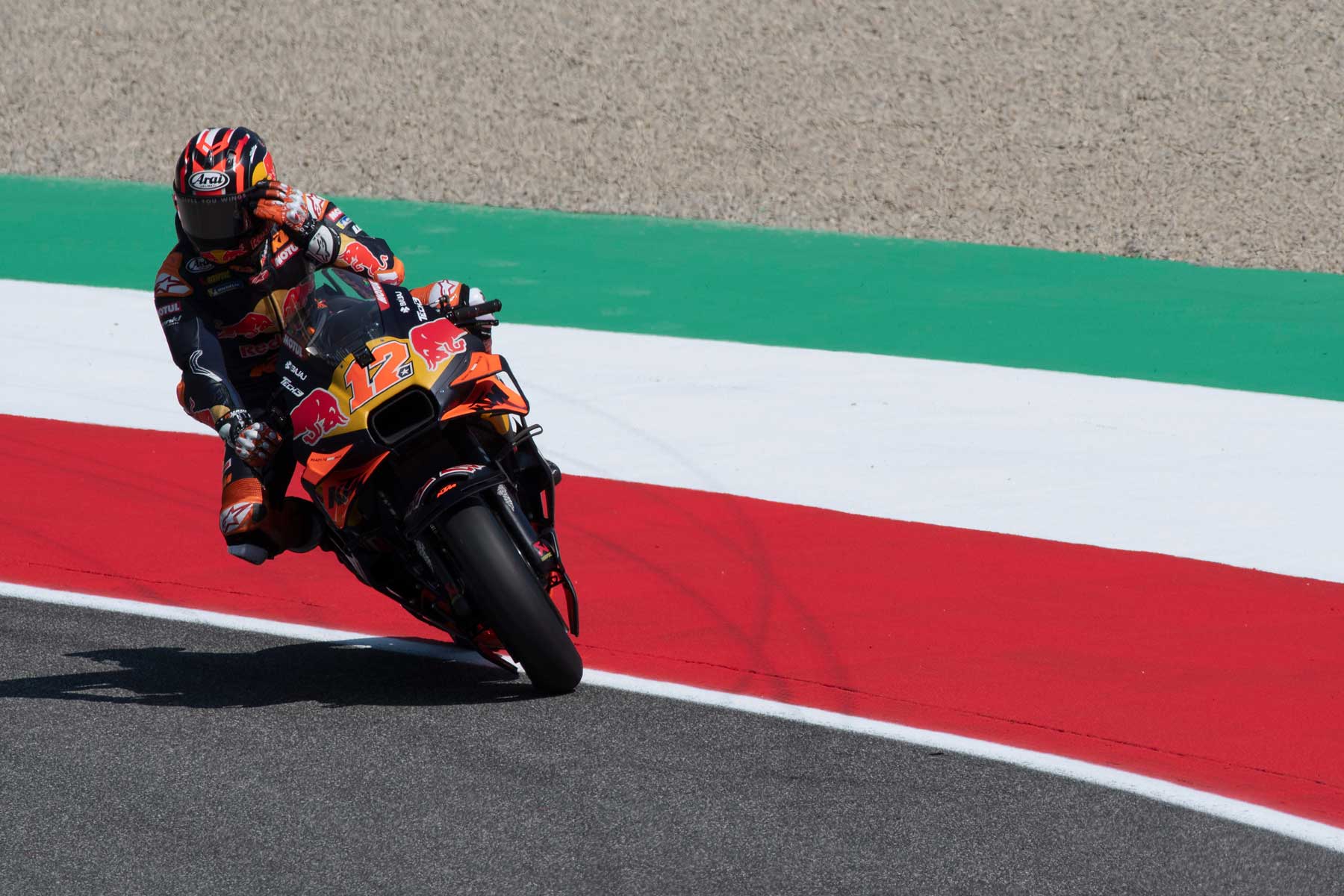Are you willing to sponsor?
Are you ready to explore the transformative power of athlete sponsorship for your brand? Click here to learn more about how sponsorship can help brands grow and thrive in the exciting world of motorsports.
By Silvia Schweiger| Posted March 29, 2024 | In Formula 1, Formula1
Picture this: the roar of high-performance engines, the thrill of speed, and the adrenaline-pumping action of Formula 1 racing. But what happens when the unexpected occurs? Enter the unsung hero of the racetrack – the Formula 1 Safety Car.
The world of Formula 1 is a symphony of power, strategy, and precision. As fans and enthusiasts revel in the heart-pounding excitement, it’s crucial to remember that safety is paramount.
Formula 1 racing isn’t just about speed; it’s about calculated risks and meticulous planning. The Safety Vehicle takes center stage when accidents, adverse weather conditions, or debris pose a threat to drivers’ safety. This high-performance vehicle steps in to slow down the pack, allowing track officials to address hazards and ensuring driver and spectator safety.
The journey of the Formula 1 Safety Car is a tale of innovation and adaptation. From its humble beginnings in the 1970s, the Safety Car has transformed from basic production cars to specially modified vehicles capable of maintaining high speeds while keeping drivers safe.
In the realm of Formula 1, every second counts. The Safety vehicle isn’t just any car; it’s a marvel of engineering that seamlessly blends performance and safety.
Communication is the lifeline of the Safety Car. Equipped with advanced radio systems and real-time data feeds, the Safety Car driver remains in constant contact with race control. This connection ensures swift responses to evolving situations on the track.
Raw power meets finesse in the SC’s engine. With turbocharged engines and adaptive suspension systems, the Safety Car maintains high speeds while offering impeccable handling – a crucial factor when leading a pack of high-performance race cars.

Deploying the SC is an art that demands precision and timing. When chaos strikes, the Safety Car’s balletic performance takes center stage.
Timing is everything in Formula 1. The Safety vehicle’s deployment must balance the need for driver safety with minimizing interruptions to the race. One wrong move, and the entire racing strategy could be upended.
Behind the scenes, orchestrated chaos reigns supreme. As the Safety Car leads the pack, teams seize the opportunity to strategize pit stops and tire changes, reshuffling the deck and adding a strategic layer to the race.
The Safety Car isn’t just a reactive measure; it’s a strategic element that can reshape the entire race.
In Formula 1, fortunes can change in an instant. The SC neutralizes the race, erasing the lead that some drivers painstakingly built. This gives underdogs a fighting chance and keeps fans at the edge of their seats.
With the SC in play, pit strategies come alive. Teams must decide whether to pit immediately, risking track position, or bide their time, hoping for a more advantageous moment. This dynamic decision-making elevates the thrill of the sport.
Aston Martin, synonymous with luxury and performance, takes center stage with its trailblazing Vantage Safety Car. Drenched in a captivating shade of green, this remarkable vehicle stands as a testament to Aston Martin’s commitment to merging aesthetics with advanced engineering. The Vantage encapsulates power, agility, and safety seamlessly.
Boasting a remarkable 510 horsepower, the Aston Martin Vantage is a force to be reckoned with. This powerhouse accelerates from 0 to 100 km/h in a breathtaking 3.5 seconds, a feat that mirrors the acceleration of the F1 cars it safeguards. This dynamic performance owes its brilliance to meticulously crafted engineering, where every component is optimized for peak efficiency.
The Aston Martin Vantage’s prowess extends beyond acceleration. As the ultimate guardian of the track, it commands authority with a top speed of 325 km/h, ensuring that it can effortlessly take the lead and control the pack in the event of unforeseen incidents. Its aerodynamic design, coupled with cutting-edge suspension technology, guarantees exceptional handling and stability even at high speeds.
While performance reigns supreme, the Aston Martin Vantage also stands out for its striking design. Every curve and contour is a masterstroke of aerodynamic ingenuity, not only enhancing its visual appeal but also contributing to its stability and precision on the track. This is a fusion of art and engineering that encapsulates Aston Martin’s unrivaled legacy.
The Aston Martin Vantage SC, a culmination of British elegance and engineering prowess, is priced at 170,885 euros. This figure underlines the blend of performance and sophistication that defines Aston Martin’s heritage.
As the dust settles and the roar of engines fades, the Formula 1 Safety Car remains an unsung hero. It embodies the delicate balance between the pursuit of victory and the commitment to safety, adding depth and drama to an already captivating sport.
So, next time you witness it take to the track, remember – it’s not just a car; it’s a guardian of the racing spirit.
The driver of the Safety Car is often an experienced racer with a deep understanding of track dynamics and racing conditions. Their ability to maintain consistent speeds and react swiftly is crucial to ensuring safety.
The Safety Car is equipped with specialized tires that provide enhanced grip even in challenging weather. Additionally, its advanced traction control and stability systems help the driver navigate slippery surfaces.
Yes, teams can communicate with their drivers through radio channels, offering guidance on strategy adjustments and providing updates on the race situation.
The decision to return to the pit lane is based on multiple factors, including track clearance progress, driver safety, and weather conditions. Race control communicates with the Safety Car driver to determine the optimal time for its exit.
Yes, there have been instances where the Safety Car itself has been involved in incidents, but these are relatively rare. Safety Car drivers undergo extensive training to navigate the track safely and avoid contributing to race disruptions.
Are you ready to explore the transformative power of athlete sponsorship for your brand? Click here to learn more about how sponsorship can help brands grow and thrive in the exciting world of motorsports.

Associate Director, Executive Marketing and Commercial at RTR Sports Marketing, a London-based sports marketing company specializing in motorsport for over 25 years. Without sports, life is boring
The online platform where you can discover the latest trends, strategies and insights from the exciting world of sports marketing.
View our blog
July 1, 2025
In the complex and exciting world of Formula 1, performance no longer belongs exclusively to wind tunnels and race strategies. It also unfolds in boardrooms, brand labs, and experiential mark[...]
Read More
June 11, 2025
The 2026 calendar of the Formula 1, officially announced on June 10, 2025, includes a season of 24 Grands Prix that will cross five continents and introduce new venues, logistical variations [...]
Read More
June 4, 2025
When Liberty Media acquired Formula 1 in 2017, revenue from sponsorship of the championship was around $272 million. Eight years later, that figure seems like an echo of a bygone era. By 2025[...]
Read MoreIn an era where it is possible to get anywhere with a click, there is a strong temptation to approach teams and properties directly for sponsorship projects.
By doing so, we are convinced that we are shortening the value chain, saving time and money. However, these DYI methods are anything but risk-free and what initially appears to be a competitive advantage soon turns into a problem that is difficult to resolve. That’s why there are agencies. And this is why you should rely on us for your sponsorships.
When first approaching a sponsorship or sports marketing project, it is difficult to know immediately which stakeholders are correct, what the decision flow is, and what the right timelines are for each process. Sports is a very specialized field of action, and fitting effectively into its paths can take a lot of time and therefore money. We, on the other hand, know referents and spheres of action and know who to talk to, when and how. So you are also more effective.
Sports is an immense passion, and for our heart colors we would be willing to do anything. But business is a different business, and it is important to make the best possible strategic decisions based on independent research, statistics and reliable data. A sports marketing and sports sponsorship agency like RTR has an objective, 360-degree picture of the scenario and can tell you what is really best for you: which sport, which athlete, which team. This is because we possess a great deal of data and information on ratings, segmentation and attitudes. Because the numbers don’t lie. Never.
Activations are the real heart of sports sponsorship. Without them, there remains only a blank sticker on a motorcycle, car or uniform and no contact with the public, no emotional connection, no impact on the bottom line. Then how do you do it? It certainly won’t be the teams or the athletes who will help you leverage sponsorship and enjoy the many marketing rights you have paid for. To bring out the best in a sports marketing project you need an agency that knows how to use sponsorship to engage the fanbase on the Web, to reach out to Shopping Centers, to organize hospitality, to develop B2B and B2C opportunities, and to get “your” athletes in front of millions of potential consumers.
Would you ever go to the dealer who sold you the car and ask if the competitor’s car is better? No, of course. So, how do you expect to get firm measurements of the effectiveness of your sponsorship if you do not rely on someone super partes? At RTR, we have always worked with independent third-party agencies that allow us to know the return on any exposure of your brand on TV and in the media. In addition, we believe in calculating ROI as the ultimate measure of your success-so we can tell you for every penny you spend how much you are making.
We have been involved in sports sponsorship and sports marketing for more than 15 years. We are consultants in the sense that our goal is to maximize your investment, but we are also an agency that manages the project from start to finish. We have been doing this since 1995 with passion and professionalism, following three principles that have become cornerstones of our business: independence, verticality and transparency.
I would like to highlight the fact that one of the qualities of RTR is its great ability to approach the sponsorship scenario strategically, together with its passionate attitude, its amazing enthusiasm for solving problems, and its high level of professionalism.
Gianluca Degliesposti
Executive Director Server&Storage EMEA
Eurosport is truly delighted with its business relationship with Riccardo Tafà, who has become extremely popular, thanks to his detailed knowledge of the sports marketing sector and his highly diligent attitude to work.
Francois Ribeiro
Commercial Director
Passion and Expertise are the features that I have found in RTR since the very beginning. Serious and reliable professionals but also very helpful, nice and open-mind people, willing to listen and compare different ideas. All the values in which RTR believes make this agency a partner, not just a supplier, a partner with whom we have had the opportunity to achieve significant commercial results in term of success and image.
Luca Pacitto
Head of Communication
We have been working with RTR Sports Marketing for over 10 years. The objectives and the programmes of collaboration continue to be renewed and to grow with mutual satisfaction. I believe RTR is a team of great professionals led by Riccardo Tafà, who I consider a manager of exceptional skills and with a great passion for his work.
Lucio Cecchinello
Team Principal
I have known and worked with Riccardo Tafà since 1995 when we collaborated for the first time on a project for the Williams Formula 1 team. Several clients followed. After leaving Williams to work for Gerhard Berger then owner of the Toro Rosso F1 Team, I turned again to Riccardo to seek his help in finding a tool supplier for the team and Riccardo duly obliged with an introduction to USAG, a partnership with Toro Rosso which endured for five years. I recently started a new role as Group Commercial Director for the renowned Andretti Autosport organisation and I find myself working with Riccardo once again on a number of interesting projects. Why has this relationship with Riccardo endured ? He’s smart, knows the commercial side of sport inside out and back to front and he’s honest and trustworthy. Riccardo Tafà is a “doer” not a “talker”: in over 20 years I have never had a dispute either with him or with a company that he has introduced and each partnership introduced by Riccardo has delivered quantifiable ROI to rights holder and sponsor alike. I can think of no better testimonial of Riccardo’s diligence, knowledge, contact base and hard work than that.
Jim Wright
Group Commercial Director
The online platform where you can discover the latest trends, strategies and insights from the exciting world of sports marketing.
View our blog
July 1, 2025
In the complex and exciting world of Formula 1, performance no longer belongs exclusively to wind tunnels and race strategies. It also unfolds in boardrooms, brand labs, and experiential mark[...]
Read More
June 26, 2025
The European Commission has provided Liberty Media Corporation with unconditional approval to complete the acquisition of the MotoGP World Championship. The process of annexing the top motorc[...]
Read More
June 18, 2025
When you think of sports, what comes to mind? For many, the answer is sports marketing management. We see Super Bowl or Olympic commercials and it seems like every other product is marketed t[...]
Read More
Great insights on the Safety Car! I always find it fascinating how strategic decisions can change the race dynamics. It’s interesting to see how different teams approach the safety car situation based on track conditions and tire management. Looking forward to your next post!